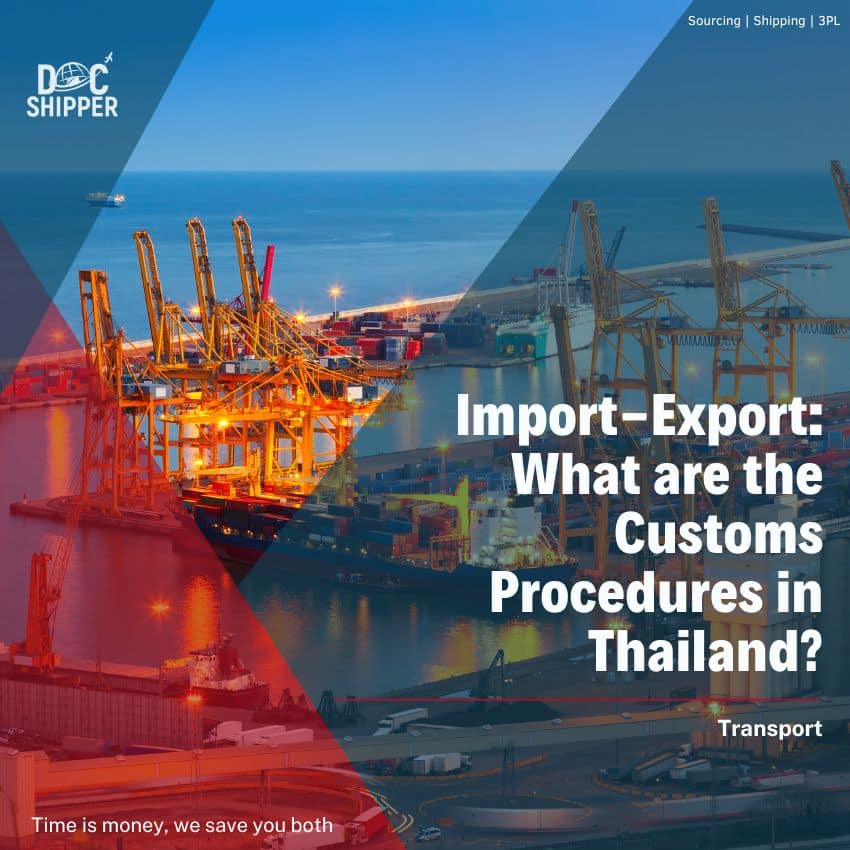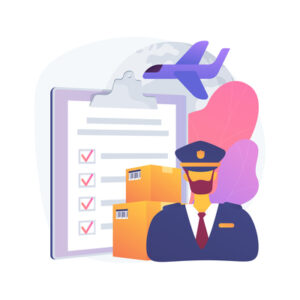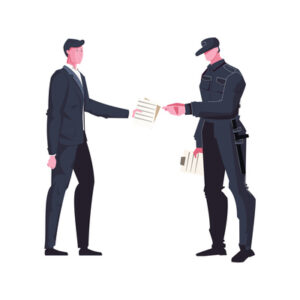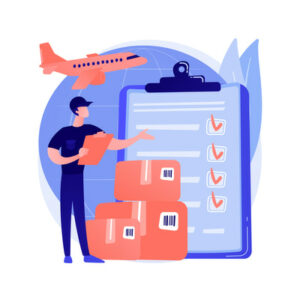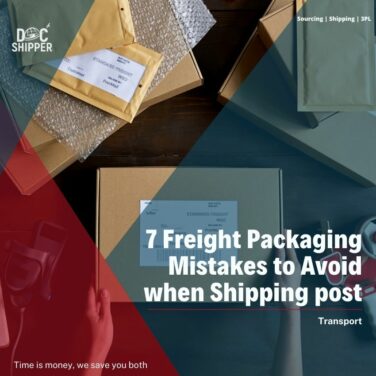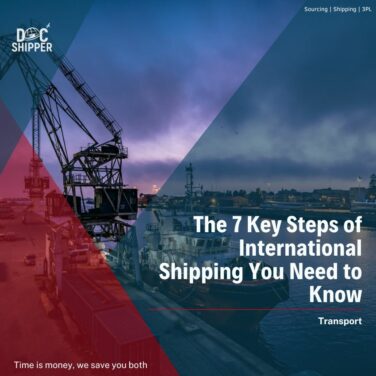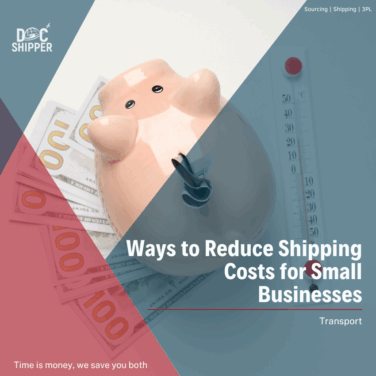Since the Foreign Business Act was established in 1999, foreign businesses expanding in Thailand in a few very specialized industries have been required to have a Thai shareholder majority. Activities involving import and export are excluded from this requirement. Thanks to this exemption, well-developed infrastructure, and a clear regulatory framework, Thailand serves as a center for cross-border trade. Thailand’s exports of goods reached US$212 billion in 2015, ranking 22nd in the world in terms of value. Thailand was the 25th highest importer in the world for the same year, with a total of 177 billion US dollars of imports.
In comparison to the average for Thailand’s neighbors in East Asia and the Pacific, the World Bank reports that import and export times and prices are much lower in Thailand. The implementation of a customs system that is available on the web in recent years has considerably streamlined import/export operations. A number of processes, including the granting of permits and the payment of customs and taxes, have been totally dematerialized and are now done online.
The purpose of this article is to provide a summary of the steps involved in exchanging products from or to Thailand.
FNM Vietnam Info
DocShipper info: Tired of the issues you’re constantly facing because of customs checkpoints? All that paperwork seems hard to prepare and to understand? Don’t worry about it! We got this. Thanks to our customs clearance service, we can handle all of these procedures for you. You’ll pass through the checkpoints very easily! What are you waiting for, contact us!
Imports procedures in Thailand
All items brought into Thailand must be documented with the customs service, according to Thai law. For this, the steps listed below should be taken.
Step 1: Create an account on the online customs system
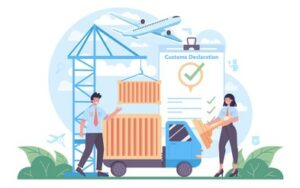
The importer (natural person or company) must first possess a “digital certificate” in order to register in this system. This certificate, which functions as an electronic signature to verify the sender’s identity and validity when sending electronic documents, is necessary for all businesses operating online in Thailand that engage in reportable exports or imports.
The importer can register for the online customs service as soon as they get a digital certificate. Firms have the possibility of registering either directly through the system (at their own office) or through an agent. In the second scenario, the agent will log on to the computer system. The following activities must be performed in order to register in the system:
- The company’s IT systems need to have the customs service software installed, and the digital certificate needs to be validated
- Each customs office has a Registration and Customs Privileges Sub-Division, Customs Procedures and Standard Assessments Valuation Standard Bureau, or General Administration Division where the importer should register with Thai Customs
- Testing is necessary to determine the efficacy and validity of exchanges with the online customs system
- The tests are completed when the Communication and IT Bureau issues an identification number, marking the end of the process.
Step 2: Verifying the products’ compliance
Before the items are imported, it is important to double-check two things: first, see if they need an importation permission, and then, make sure they don’t fall inside the “red line” (literally, “red line”).
A lot of items need import permissions from various organizations before they can arrive in the country. For instance, the importation of used cars requires a permit from the Department of Foreign Trade, whereas the importation of food goods (“Food and Drug Administration”) is governed by the Ministry of Health and requires permission from the Medicines Agency. On the website of the Customs Department, you can get a list of the items that need import authorisation. Only half of Thai government entities currently allow online applications for import permissions, but the government is currently striving to integrate these permits into the online customs system.
The second check entails determining whether or not the imported items fit inside the so-called “red line” category (as contrary to the so-called “green line” category). The “red line” category includes products that are high risk and need further inspections at the border, such as food, drink, and plants. The following supporting papers must be produced in the event that “red line” products are imported:
- Bill of Lading, B/L, Air Waybill
- Invoice
- Goods List
- Import Permit (if necessary)
- Certificates of Origin
- Other pertinent records (e.g. list of ingredients, technical standards certificates, etc).
Once the importer submits the Import Declaration, the computerized customs system will alert him of any qualities that fall under the “red line” category even though there is no set list of such attributes (see Step 3). To be ready in the case of categorization in the “red line” category, it is imperative to verify that all relevant documentation is complete prior to any imports.
FNM Vietnam Tip
DocShipper Tip: It might be complicated to deal with all the documents and the requirements when it comes to shipping or importing. But the bill of lading is a very important document during this process so let’s inform you about it! Everything you need to know about the bill of lading and how to use it and what its features are, you can find here in this article! Contact us for more information!
Step 3: Making the declaration and having it verified
Once all the paperwork is in order, an import declaration and an arrival sheet containing details on the ship bringing the products may be sent through the computerized customs system. The customs computer system will next verify the uploaded declaration for any errors and determine whether the cargo falls within the “green line” or “red line” parameters.
Step 4: Paying taxes and duties
“Imported products and exported items must be subject to customs taxes”, specifies Thai Customs Tariff Decree number B.E. 2530. The Integrated Tariff Database has a list of the commodities that are exempt from these customs taxes.
Step 5: Examination and discharge of the cargo
An examination of the shipment is the final action before it is discharged. It just takes a few minutes and is a simple check for homes that fall under the “green line” category. For anything falling under the “red line” category, supporting documentation must be provided, and customs officers will physically inspect the items.
Exports procedures from Thailand
Thai exports are subject to customs restrictions and must be notified to customs. Export procedures are extremely similar to import procedures because of the dematerialization of processes through the online customs system.
Step 1: Create an account using the online customs system.
If the business imports and exports products to Thailand, just one registration is required on the online customs system.
Much like with imports, checks must be made for items needing an export license and shipments that fall into the “red line” category.
Currently, an export license is needed for about 50 different types of items. These products include trees and seeds, as well as products like sugar and rice for which a license is necessary to guarantee quality. A comprehensive list of prohibited items may be found on the website of the Customs Department.
Before the cargo may exit Thailand, extra paperwork must be provided for articles that belong to the “red line” category. Yet, the red line requirement, if applicable, will only be provided by the online customs system at step 3. Consequently, exporters have to think about creating the following paperwork:
- Invoice
- Export license (if required)
- Other related documents (e.g. Food and Drug Administration authorization, destination information, etc.).
FNM Vietnam Tip
DocShipper advice: Shipping goods from a country to another is not an easy task to do! In fact, the shipping process is getting more complicated. But with DocShipper, you wouldn’t have to worry about that! In this article, we talk about improving the shipping process in international trade! Read it and don’t forget to contact us!
Step 2: Making the declaration and having it verified
An export declaration, an invoice, and a description of the shipment must all be entered into the computer system by the exporter. Yet again, if there are no flaws, the system will generate a declaration, a transaction code, and specify if the cargo falls within the “green line” or “red line” categories.
Step 3: Paying taxes and duties
Customs taxes are not always required to be paid on all purchases. The approved list of items free from customs tax may be found in the Consolidated Tariff Database.
There are three methods for paying export duties: in cash at the customs office at the point of departure from the country, electronically through the customs website, or financially through a bank.
Step 4: Inspection and release of the cargo
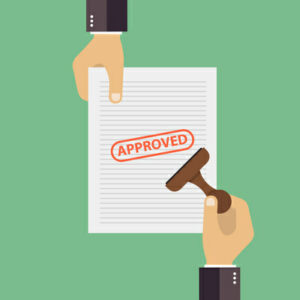
Finally, it is the shipping company’s or agent’s job to provide the vessel manifest information after the shipment has reached its destination. The online customs system must get this data.
FAQ | Import-Export: What are the Customs Procedures in Thailand?
-Commercial Invoice. This document is used for foreign trade
-Packing List. Provided by the shipper or freight forwarder, the packing list may be used by customs to check the cargo
-Bill of Lading (BOL)
-Arrival Notice
Read more
Looking for more? These articles might interest you:
DocShipper info: Did you like this article? You may also like the following:
Need Help with Logistics
or Sourcing in Vietnam ?
First, we secure the right products from the right suppliers at the right price by managing the sourcing process from start to finish. Then, we simplify your shipping experience - from pickup to final delivery - ensuring any product, anywhere, is delivered at highly competitive prices.

Fill the Form
Prefer email? Send us your inquiry, and we’ll get back to you as soon as possible.
Contact us

